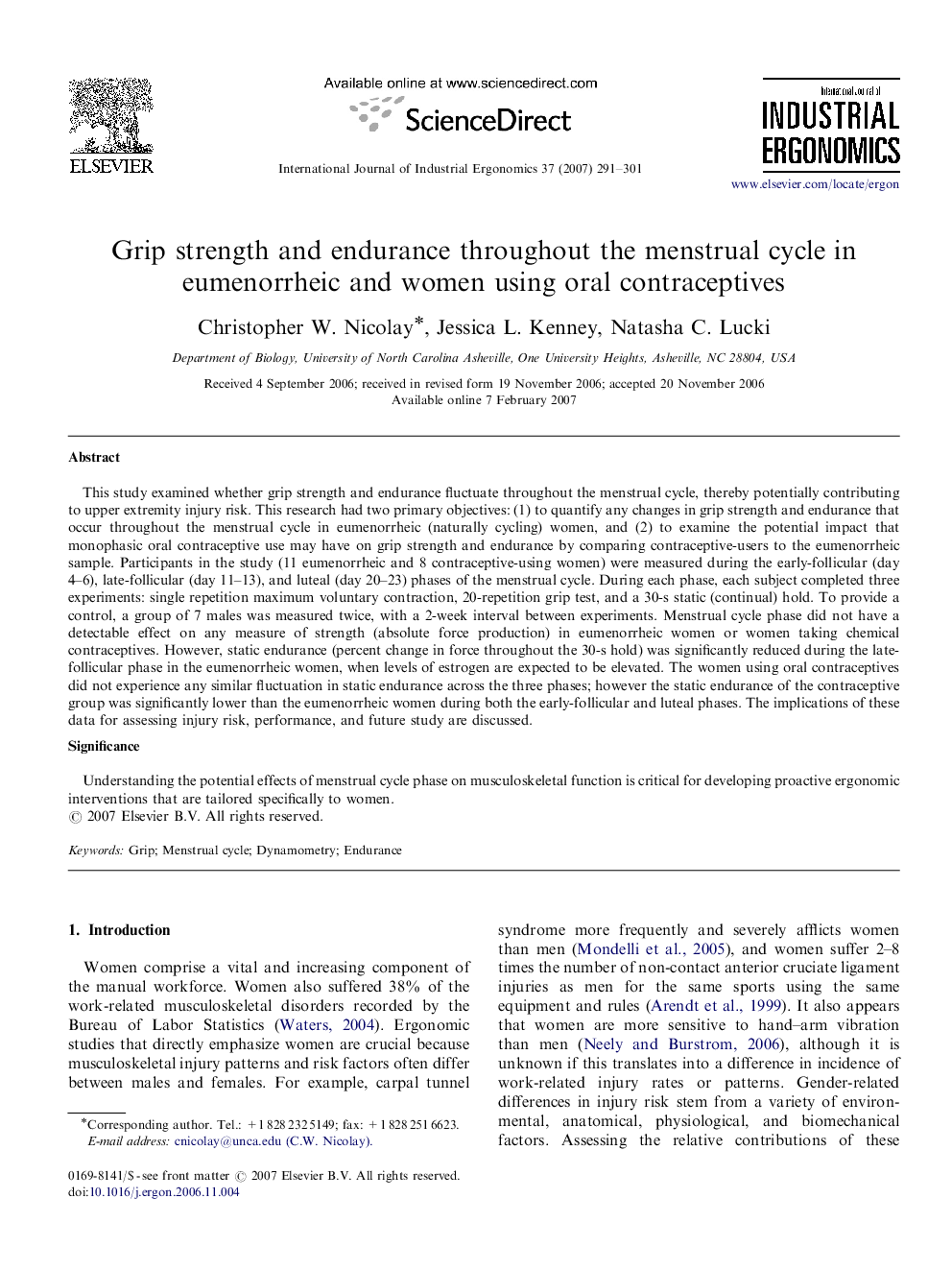| Article ID | Journal | Published Year | Pages | File Type |
|---|---|---|---|---|
| 1096972 | International Journal of Industrial Ergonomics | 2007 | 11 Pages |
This study examined whether grip strength and endurance fluctuate throughout the menstrual cycle, thereby potentially contributing to upper extremity injury risk. This research had two primary objectives: (1) to quantify any changes in grip strength and endurance that occur throughout the menstrual cycle in eumenorrheic (naturally cycling) women, and (2) to examine the potential impact that monophasic oral contraceptive use may have on grip strength and endurance by comparing contraceptive-users to the eumenorrheic sample. Participants in the study (11 eumenorrheic and 8 contraceptive-using women) were measured during the early-follicular (day 4–6), late-follicular (day 11–13), and luteal (day 20–23) phases of the menstrual cycle. During each phase, each subject completed three experiments: single repetition maximum voluntary contraction, 20-repetition grip test, and a 30-s static (continual) hold. To provide a control, a group of 7 males was measured twice, with a 2-week interval between experiments. Menstrual cycle phase did not have a detectable effect on any measure of strength (absolute force production) in eumenorrheic women or women taking chemical contraceptives. However, static endurance (percent change in force throughout the 30-s hold) was significantly reduced during the late-follicular phase in the eumenorrheic women, when levels of estrogen are expected to be elevated. The women using oral contraceptives did not experience any similar fluctuation in static endurance across the three phases; however the static endurance of the contraceptive group was significantly lower than the eumenorrheic women during both the early-follicular and luteal phases. The implications of these data for assessing injury risk, performance, and future study are discussed.SignificanceUnderstanding the potential effects of menstrual cycle phase on musculoskeletal function is critical for developing proactive ergonomic interventions that are tailored specifically to women.
